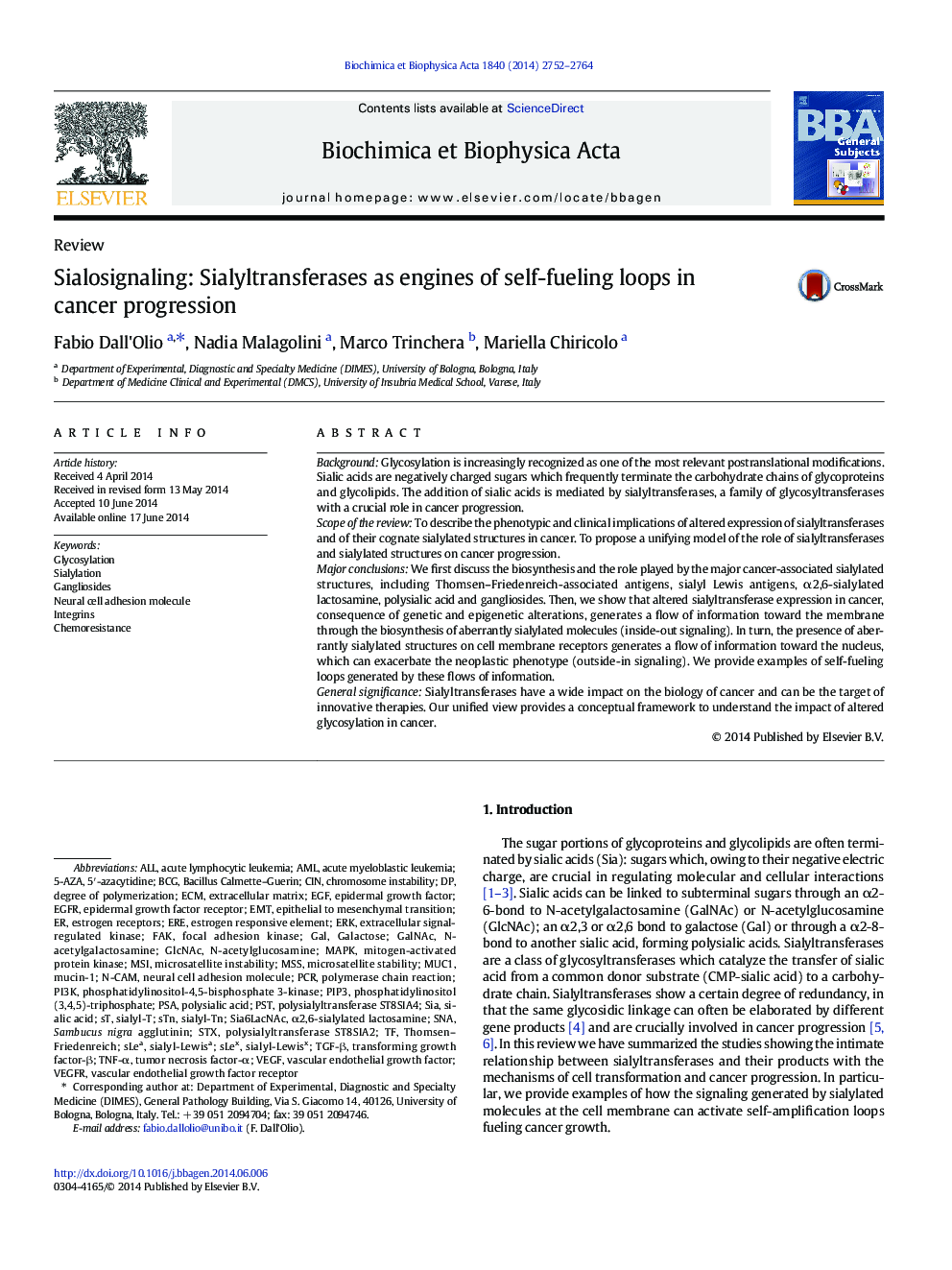| Article ID | Journal | Published Year | Pages | File Type |
|---|---|---|---|---|
| 1947559 | Biochimica et Biophysica Acta (BBA) - General Subjects | 2014 | 13 Pages |
Abstract
Sialyltransferases have a wide impact on the biology of cancer and can be the target of innovative therapies. Our unified view provides a conceptual framework to understand the impact of altered glycosylation in cancer.
Keywords
SNABCGFAKERKMSSERESialyl-TnN-CAMSambucus nigra agglutininPSTSTNSLexECMMSISIAMUC1VEGFRGangliosidesSialylationGalNAcN-acetylgalactosaminePIP3STXEGFRGlcNAcsialyl-LewisxAMLTGF-βPSAPI3KEGFsLeA5-AzaBacillus Calmette–GuérinMAPKPhosphatidylinositol-4,5-bisphosphate 3-kinasePolysialic acidepithelial to mesenchymal transitionIntegrinsMicrosatellite instabilityChromosome instabilitytransforming growth factor-βtumor necrosis factor-αEMTCindegree of polymerizationSialic acidepidermal growth factorEstrogen responsive elementVascular endothelial growth factorVascular Endothelial Growth Factor (VEGF)TNF-αphosphatidylinositol (3,4,5)-triphosphateacute lymphocytic leukemiaAcute myeloblastic leukemiaExtracellular matrixneural cell adhesion moleculemucin-1N-acetylglucosamineALLpolymerase chain reactionPCRmicrosatellite stabilitymitogen-activated protein kinaseChemoresistanceextracellular signal-regulated kinasefocal adhesion kinaseGalGalactoseGlycosylationvascular endothelial growth factor receptorEpidermal growth factor receptorestrogen receptors
Related Topics
Life Sciences
Biochemistry, Genetics and Molecular Biology
Biochemistry
Authors
Fabio Dall'Olio, Nadia Malagolini, Marco Trinchera, Mariella Chiricolo,
